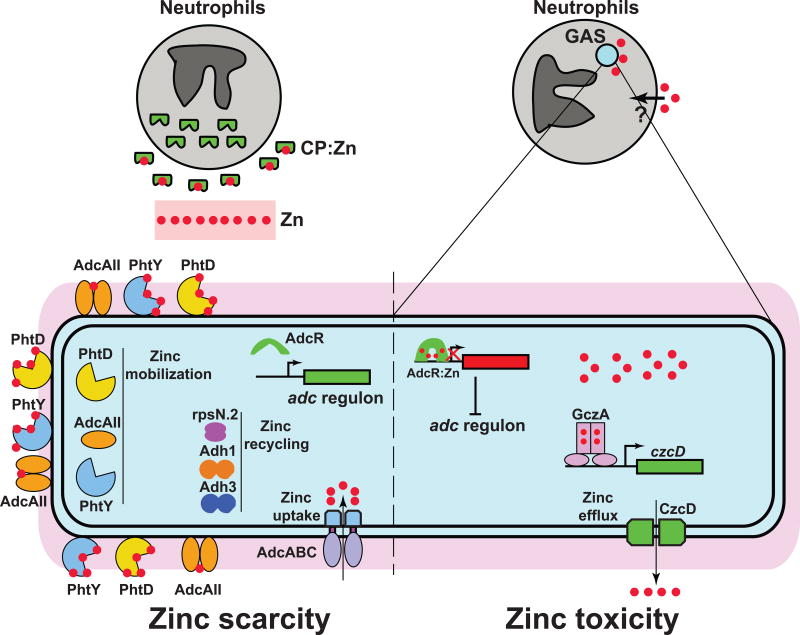Figure 1.
Zinc at host-GAS interface. During invasive infection, neutrophils release calprotectin (CP) at GAS colonization surfaces. CP scavenges zinc from the invading pathogen and retards GAS growth. The CP-imposed zinc scarcity (left panel) is sensed by zinc-sensing metalloregulator, AdcR, and the zinc-free AdcR relieves the repression of adc regulon. The adc regulon is comprised of zinc uptake system (AdcABC), zinc mobilization system (AdcAII, PhtD, and PhtY), and zinc recycling mechanisms (rpsN.2, Adh1, and Adh3). Gene expression of adc regulon facilitates zinc acquisition and aids GAS survival under zinc limiting conditions. When phagocytosed, GAS encounters neutrophil-induced phagosomal zinc intoxication (right panel). During zinc toxicity, the zinc-metallated AdcR dimer (AdcR2:Zn4) binds to target promoter sequences and causes the repression of adc regulon. Conversely, the zinc-bound TetR family regulator, GczA (GczA2:Zn4), interacts with target promoter and activates the transcription of zinc efflux pump czcD. The zinc efflux by CzcD detoxifies GAS cytosol of excess zinc and promotes GAS survival during zinc intoxication.

